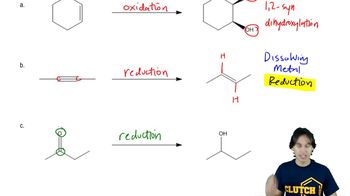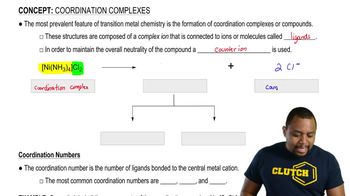Textbook Question
Predict the products obtained when d-galactose reacts with each reagent.(a) Br2 and H2O
 Verified step by step guidance
Verified step by step guidance Verified video answer for a similar problem:
Verified video answer for a similar problem:



 4:15m
4:15mMaster Monosaccharides - Weak Oxidation (Aldonic Acid) with a bite sized video explanation from Johnny
Start learning